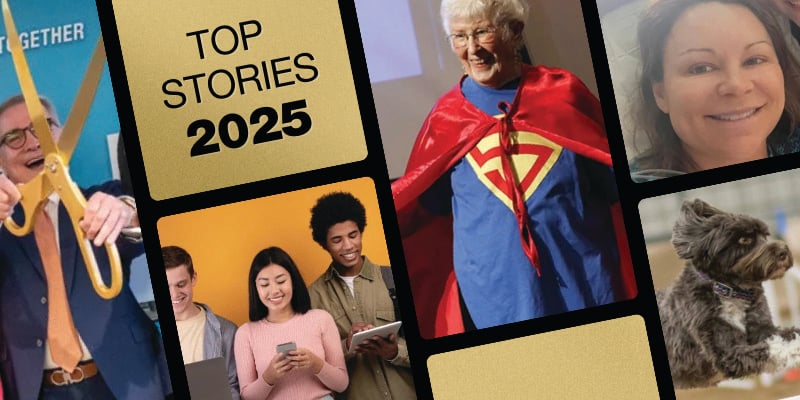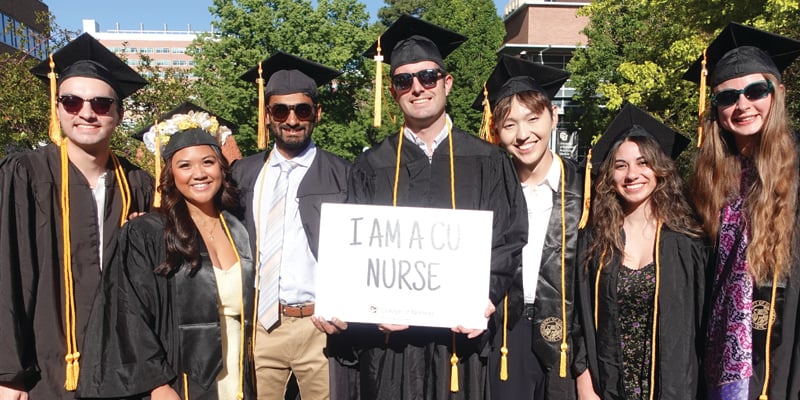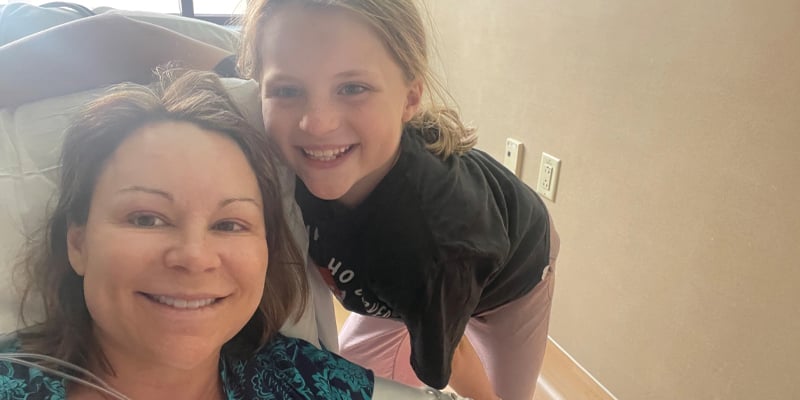One moment, 32-year-old Terry Chase was leaning over the handlebars of her road bike feeling the sun and wind caress her face while her lungs and legs pumped and burned along a 10-mile route in Grand Junction. The next moment, she was airborne.
She landed on the hot hood of a Lincoln Continental, sprawled across the windshield. It kept going. Chase heard crunching as the car demolished her bike. The driver swerved hard and she rolled off, slamming into the pavement. As he sped away, strangers ran over to help. She couldn’t move. Chase cried, “Where are my legs?” Her back was broken.
In one breath, Chase had gone from an athlete to half paralyzed as her spine shattered leaving her in a wheelchair for life. But today, after living with a disability for 35 years, Chase calls that wheelchair “a gift”.
“The accident knocked the crap out of me or perhaps what was holding me back,” wrote Terry Chase, ND, MA, RN, CEIP-ED, in her book Spoke by Spoke: How a Broken Back and a Broken Bike Led to a Wholehearted Life.
“It turns out the injury that seemed to take away so much actually gave me more and allowed me to live a fuller, expansive life. It’s ironic that after getting hit by that car…and being left half-paralyzed, I finally learned to take the first step toward creating my life.”
Broken back, broken life
Before the accident, Chase was a middle school physical education teacher muddling along, a little bored and lost in a cycle of dead-end relationships. She didn’t know what she wanted or where she was headed.
“After the accident, I saw many other people walking around in the world who seemed more paralyzed than I was… Now, I want more. The accident helped bring that into sharp focus,” said Chase. “It helped me see more clearly what I wanted from life. So, I went for meaningful experiences, emotional risk-taking and stretching my comfort zone.”
First, Chase spent three months at Craig Hospital, a world-renowned rehabilitation facility in Denver that specializes in traumatic brain and spinal cord injury treatment. She learned to maneuver a wheelchair, regain independence and practice healthy self-care for her injured body. She then returned to teaching.
Chase wanted to show students when things get tough, you get back to work. But secretly, she was hurting.
Edge of dark
Sometimes Chase would find herself in dark places, unable to share the pain and incomprehension of what happened. She used to lead groups of adolescents and adults into the wilderness for two-week expeditions as an instructor for the Colorado Outward Bound School. She used to hike for miles and bike off-road after stressful days at work. She used to run, explore and play sports with kids. Chase was sure she would never do any of it again. So, one dark day in 1989 as she sat in her wheelchair on the edge of a cliff, she considered rolling off. She wanted to be free of the metal machine that trapped her.
“It’s not that I wanted to kill myself, I just wanted out of that wheelchair. It wasn’t simply the physical freedom that I missed, it was the emotional release and exhilaration of moving as well… activities calmed me,” said Chase. “So, I just wanted to end it. Put myself out of my misery and be done. But something always drew me back from the edge of that darkness.”
In that moment, Chase discovered what she had to do: admit she was human, face the darkness, and step into the light. She learned to live again.
Stepping into the light
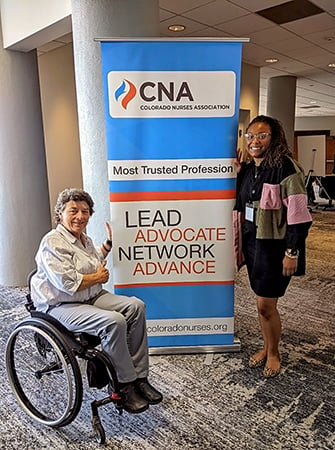
Dr. Terry Chase, CU Nursing 1996 Alumna |
Two years after her injury, Chase earned a master’s degree in Exercise Science at the University of Denver. Then in 1992, she changed careers and pursued a doctorate in nursing at the University of Colorado School of Nursing. It took four years of full-time classes and 4,000 hours of hands-on clinical experience to complete. While she was trying to heal herself, she sought to help others through nursing. When she graduated in 1996, she became the first nurse most people had ever seen in a wheelchair.
With that education, Chase found herself back at Craig Hospital. This time, she was taking care of others with spinal cord injuries. She had finally found a way to be bigger than her chair.
“My wheelchair was a gift because I was at the same level as patients. I was not standing above them; I was sitting at eye level, balancing our relationship from the start. They knew I could understand what it was like for them when I rolled into their room as a nurse and as an educator.”
As an Admission Clinical Liaison and Patient and Family Education Coordinator for 25 years at Craig, Chase created a ‘real and dynamic’ program for patients with catastrophic injuries. Instead of sugarcoating problems, she spoke plainly about what they would face. Chase knew hearing the truth had helped her cope.
Keep learning, keep riding
Chase also learned to get back outdoors. With specialized equipment, she went water skiing, sea kayaking, swimming, cross-country skiing, bicycling, played competitive tennis for 16 years and mastered horseback riding. In her first para-dressage competition in 2016, she and her horse Pi won a blue ribbon in the novice division. Today, she calls her garage a ‘sports castle’ because it’s packed full of gear.
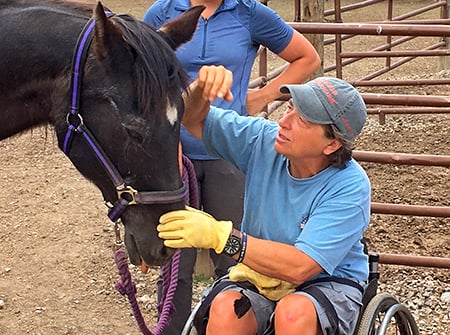
Dr. Chase working with horses for therapy. |
“My wheelchair has helped me expand not just my inner world, but also my outer world of sports and recreation. It helped turn my fear, anger and frustration into renewed sensations of discovery and joy.”
In 2004, the lifelong learner earned a master’s degree from the University of Santa Monica in Spiritual Psychology.
In 2010, she earned a certificate in Gestalt Equine Psychotherapy, which integrates therapy with the powerful healing capacity of horses. She also became certified in Human-Equine Relational Development.
Chase put all that learning to good use. She created several equine-assisted learning programs for patients at Craig Hospital, other adults and children with disability, healthcare leadership teams, nursing students and individuals seeking personal growth working with horses. Those programs are ongoing today. Chase also serves on the Temple Grandin Equine Center Advisory Board at Colorado State University.
“One of my superpowers is that I can help people in challenging situations move on, create the lives they want and flourish. The horses help us do that by keeping us in the present, in the here and now, totally real, authentic and honest,” said Chase. “I think horses have helped me become a better human being.”
Last ride
From Dr. Chase |
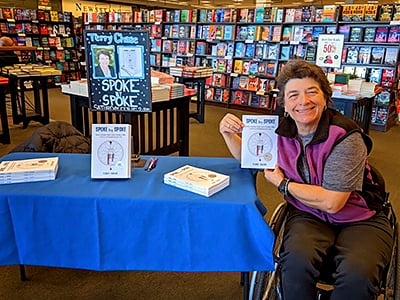
Here is my wish for you, dear reader: A wholehearted life is available to you. Your life is a gift to the world; do not hold back. Take your first step into what you want. Go for it! The cool morning air and cold waters will greet you.
Use my stories as guides. Let them help you see the way forward. I was scared many times too. I know how that feels. I can assure you that the pain of staying stuck is worse than any pain felt from taking that first step. Step just out of your comfort zone. That's where the growth is: at the edges.
Ask for help. Know you are not alone. Notice the help that is already there -maybe you just don't see it yet. Keep your eyes and heart wide open. Keep listening to that quiet inside voice. It is calling you to your life. Pay attention, and do not go back to sleep. There is always more life to be lived. |
Years after the hit-and-run, Chase remembers the day and driver who broke her back, life, and bike. Turned out he was driving drunk with no license or insurance. After police caught him trying to dump the car in a river, he served 4 years in prison then was deported.
For about a decade, Chase still carried around her mangled bike, a “mass of twisted metal with gears and cables dangling.” She could not throw it away like trash, writing in her book that it was “my bike – and my life;” a reminder of being strong, healthy and upright. When she confided that to a friend, they came up with an idea to turn the bike into something else.
They worked all night with cutting tools and a blow torch to reform the mutilated metal. In the end, brake cables held up the bike’s frame tubes. The back reflector angled out to catch wind like a sail, blowing on the dangling chains to vibrate and ring like tiny bells. Ding, ding, ding. The bike had been transformed into a windchime.
“That wind chime became a symbol of change, of transformation. It helped me know that I too could transform into something new. I could begin to let go of the images of myself pre-injury and create myself anew,” she said. “I would use it to transform myself, to catch the wind and make new music in the world.”
Today, Chase is about to retire from Colorado Mesa University where she served as an associate professor of nursing mental health/leadership for nine years. After retirement, she plans to expand her new business, DrTerryChase.com, and keep helping others as a coach, consultant and speaker.
Chase is deeply grateful to the University of Colorado College of Nursing for accepting her into the program and for the support of the faculty, program directors and peers. The coach, teacher, nurse and author ends her book with a promise that she’ll always be a light in the darkness.

